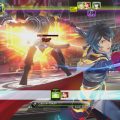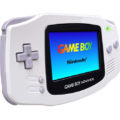Wii U retrospective – Drew’s Picks
Did we do the Wii Retrospective just over a month ago just so we could continue on to this? You make the call.
The greatest tragedy of the Wii U isn’t that the Switch enjoyed blockbuster sales with only minor tweeks to the Wii U’s ideas and hardware, but that its low sales meant so much great software didn’t have a chance to find an audience.
So far, many of those greats have directly made the jump to Switch. Maio Kart 8, New Super Mario Bros. U, Legend of Zelda: Breath of the Wild, Captain Toad, Hyrule Warriors, Donkey Kong Country: Tropical Freeze. This post won’t be about those, but rather games that haven’t made the jump.
Super Mario Maker
After all the coverage I’ve already given it, it’s hard to believe that I’d start my list with anything else.
The fact that the first Mario Maker announcement for the Switch for a sequel seals the fate of the original: Tapped forever on the Wii U. But that’s not to say it didn’t make the most sense on the Wii U. Super Mario Maker was the killer app the Wii U’s second screen had been begging for since before its launch. Sadly, it came 3 years later.
I can’t imagine the series could have gotten its start any other way, either. The dual screen might have been necessary to inspire the game’s creation. And if the ultimate slow and ugly failure of the Wii U was necessary to bring this game into the world, than it was all worth it.
Still, the Wii U Mario Maker no longer exists in its original form. That’s because of its deep Miiverse integration, which allowed creators to add signposts to their levels and players to give feedback, provide warnings to others to even get some trolling misdirection in.

Miiverse
But the Miiverse was so much more than Pictochat for
There has ever been anything like Miiverse, and the Internet is lesser for the fact that it will never come again. While threaded, annotated screenshots certainly have their utility, what I miss most about Miiverse was it being a firehose of surprisingly excellent fanart.
If you want to take a step back in time, just under 17 TB (yes, that’s terabytes) of Miiverse posts are backed up at https://archiverse.guide.
And perhaps the greatest thing Miiverse provided was a means to finally communicate to Nintendo our love for a rare and neglected game in a way they could actually hear.

Earthbound
Perhaps it’s a cheat to use a Virtual Console game here, but until the SNES Classic came along years later, this was the only chance 90% of people who have ever played Earthbound to do so legally.
Over the long years, there as great speculation over why Earthbound never saw a Virtual Console release. Many assumed its rigorous use of sampling in its music and endless trademark-infringing popular culture references ment it could never, ever see the light of day again.
But it turned out Nintendo was somehow completely blind it its rise as a cult classic and never believed anybody wanted to buy it. Earthbound hit the Virtual Console almost entirely intact. There was in fact, one trademark that needed to be removed: the red crosses on all the hospitals.
While putting it on the Wii U certainly made it more available, though, buying a Wii U wasn’t a big money-saver over buying the SNES cart on eBay.
And it certainly wasn’t cheaper than that barely-working copy I lucked into finding at the pawn shop.
Sadly, like Miiverse, the Virtual Console met its end on the Wii U.

Splatoon
Another game lessend by the lack of Miiverse integration. And another game that only indirectly made it to the Switch by way of a sequel.
I only played Splatoon a short while. Wasn’t really my thing. But it was a certifiable hit for the limited Wii U audience, and it’s success was confirmed by the sales of its sequel on the Switch.
But I wanted to make sure I called out Splatoon not just because it was Nintendo’s only new IP for the console, but because it’s such a shining example of everything Nintendo brings to the table as a creator.
It all starts from the title: A very carefully created portmanteau of two words that very accurately describe the core gameplay: kid and squid Splat and platoon.
From the title down, every aesthetic decision is in service to the core gameplay. The squid/ink/fast movement relationship is straightforward and tight. The bright colors denote both the playful tone of the game and provide stark contrast between territory claimed by friends and that by foes.
And of course, it all comes from the incredibly Nintendo idea of “let’s make a squad-based multiplayer shooter, but without any violence.” But while a lesser developer would just fluff it up and ship it out, Nintendo built an entire world around the idea to prop it up. And that requirement is what lead to the aforementioned tightly-integrated creativity.
These guys make design look easy.





